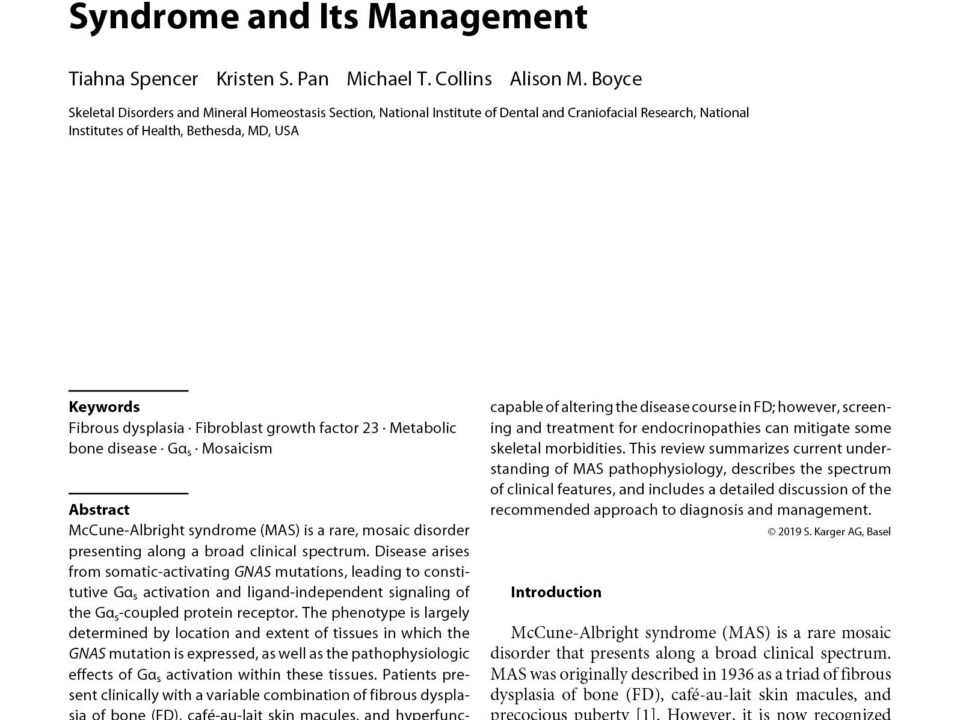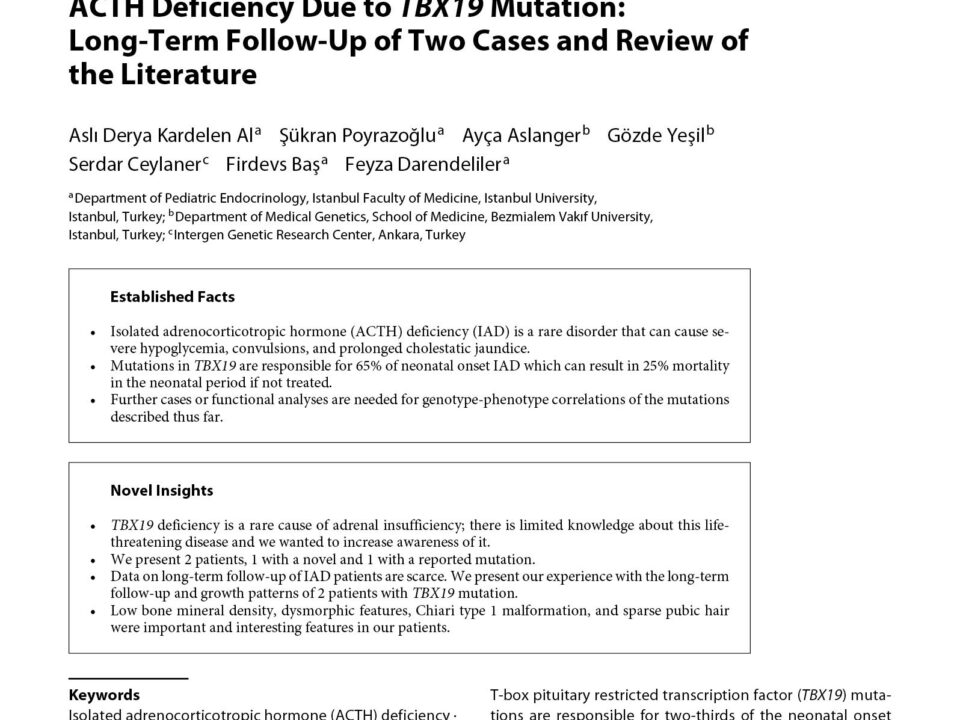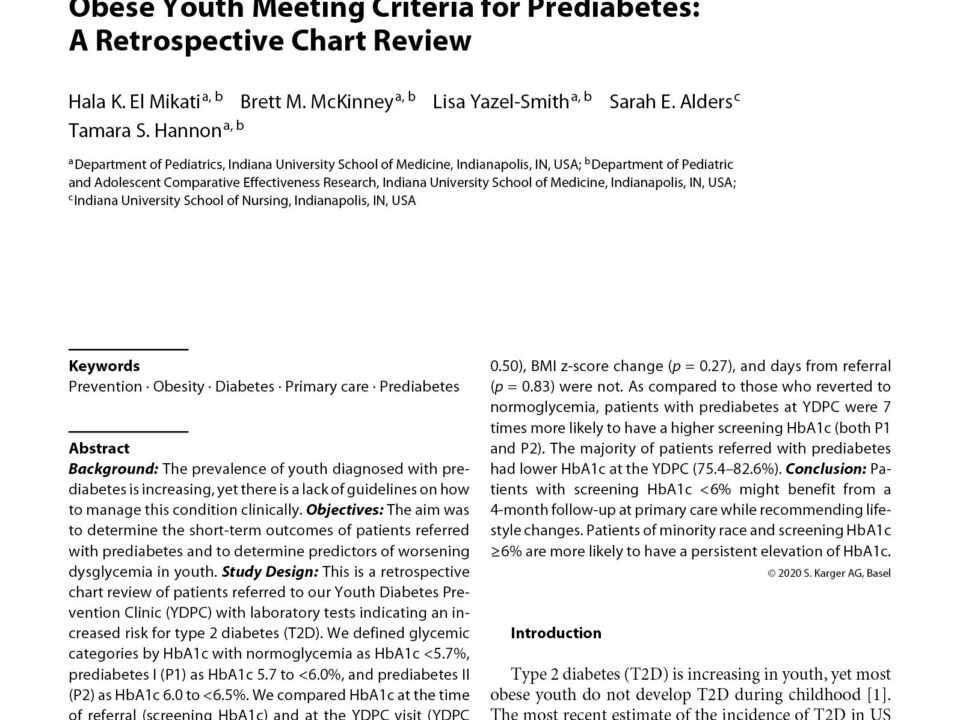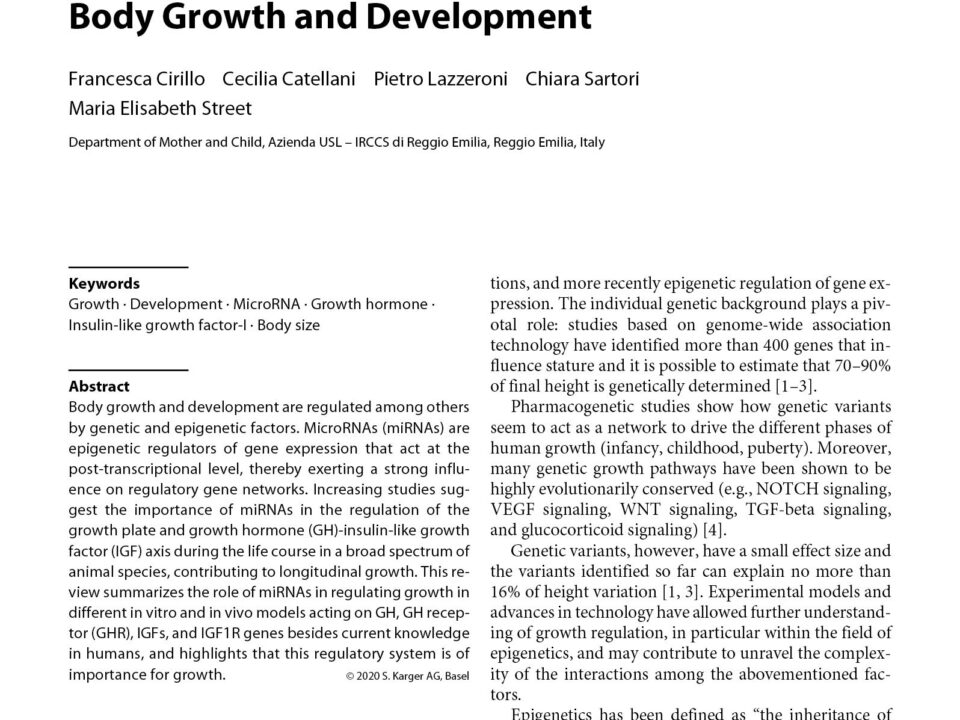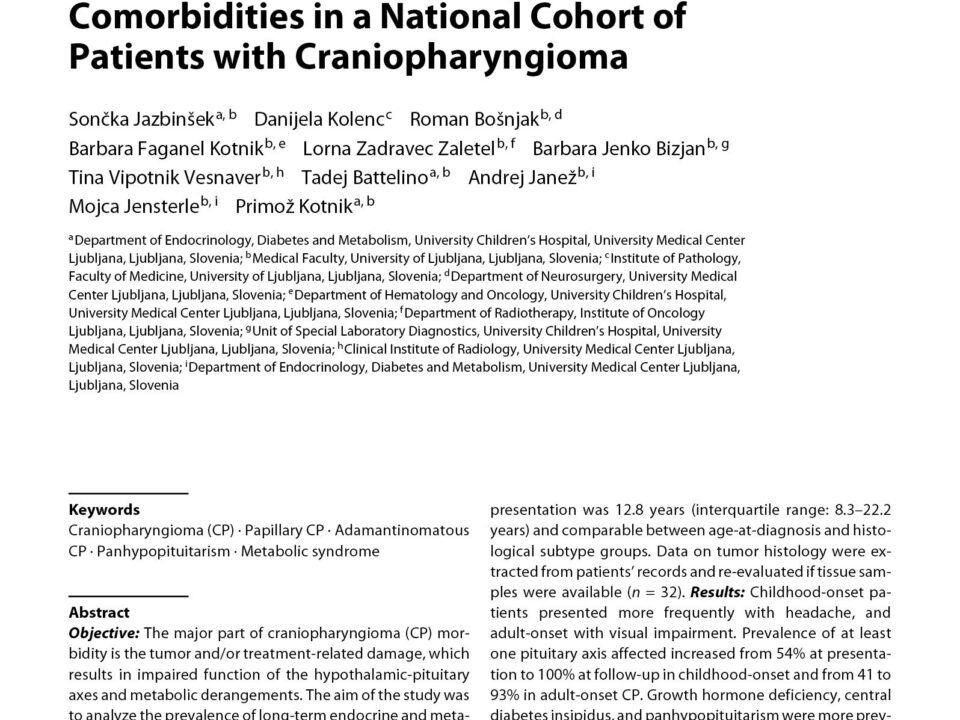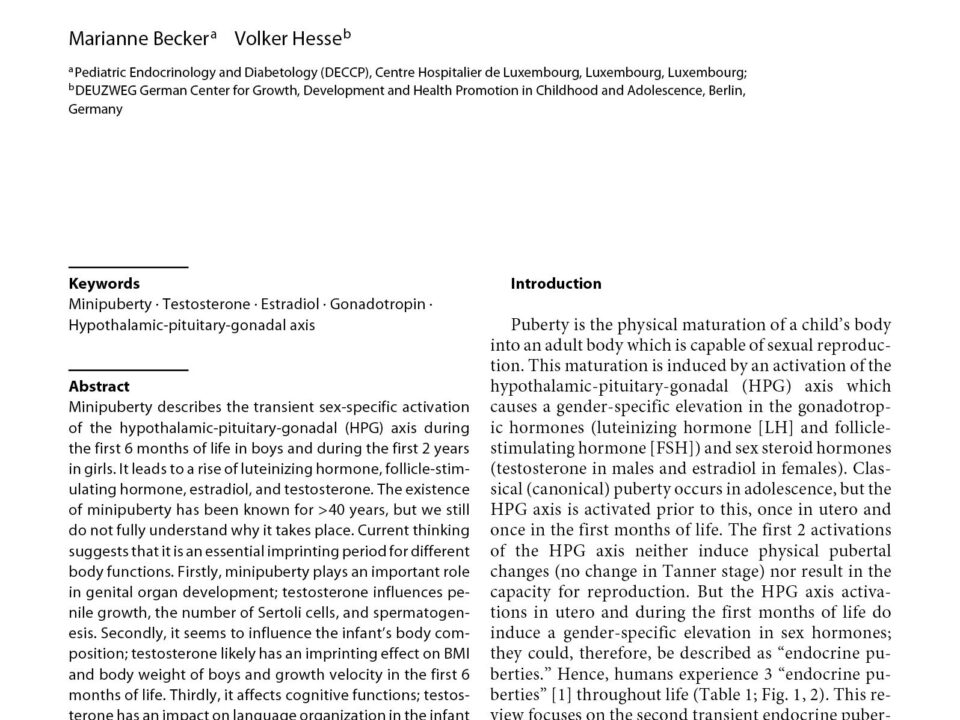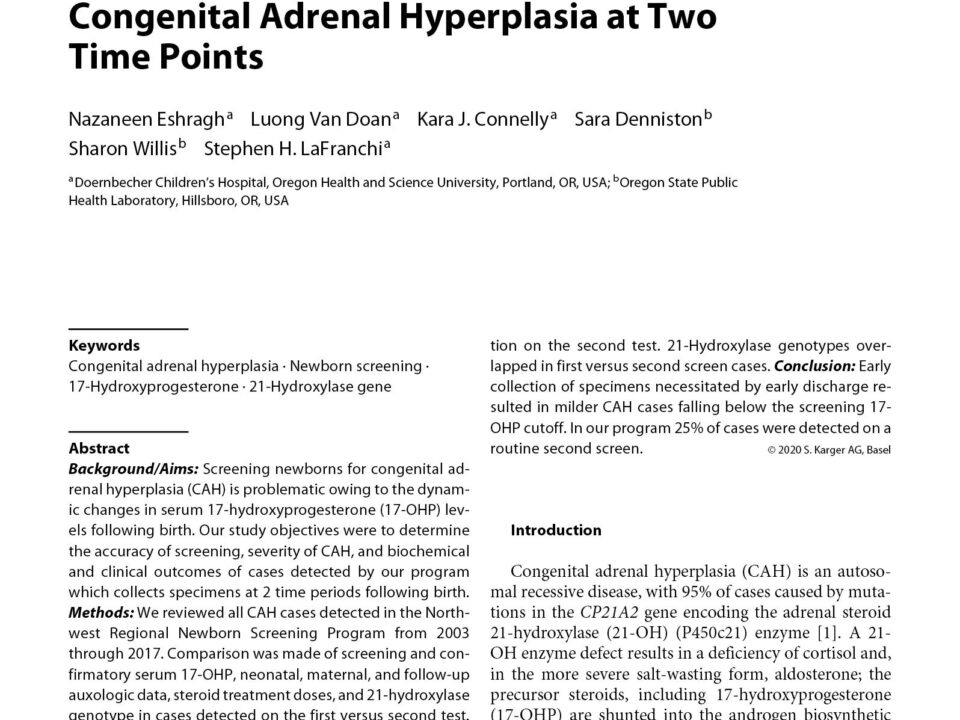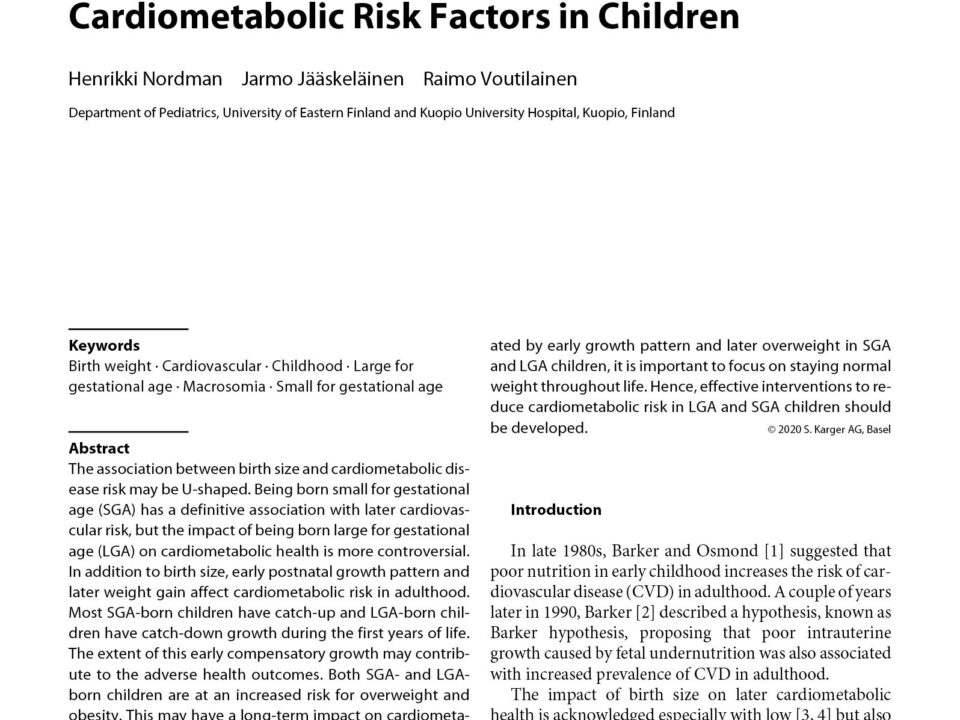December 13, 2022
Introduction: Although growth hormone (GH) is essential for attainment of peak bone mass, bone health in prepubertal children with GH deficiency is not routinely evaluated. The objective of this study was to evaluate bone microarchitecture in GH-deficient (GHD) boys using high-resolution peripheral quantitative computed tomography (HR-pQCT). Methods: Fifteen control and fifteen GHD, GH naïve pre-pubertal boys were recruited for a case-control study at a major academic center. Subjects with panhypopituitarism, chromosomal pathology, chronic steroids, or stimulant use were excluded. Volumetric bone mineral density (vBMD; total, cortical, and trabecular), bone geometry (total, cortical and trabecular cross-sectional area, cortical perimeter), bone microarchitecture, and estimated bone strength of the distal radius and tibia were assessed by HR-pQCT. Areal BMD and body composition were assessed by DXA. Insulin-like growth factor 1 (IGF-1), osteocalcin, C telopeptide, and P1NP levels were measured. Results: GHD subjects had a significantly smaller cortical perimeter of the distal radius compared to controls (p < 0.001), with the difference in cortical perimeter persisting after adjusting for height z score, age, lean mass, and 25-hydroxyvitamin D level (p < 0.05).No significant differences were found in vBMD. No significant differences were found in microarchitecture, estimated strength, areal BMD, body composition, or bone turnover markers. Analysis showed significant positive correlations between IGF-1 levels and cortical parameters. Discussion/Conclusions: Prepubertal GHD boys had deficits in bone geometry not evident with DXA. Larger prospective/longitudinal HR-pQCT studies are needed to determine the extent of these deficits, the need for routine bone evaluation, and the timing of GH replacement for prevention or restoration of these deficits.
December 13, 2022
McCune-Albright syndrome (MAS) is a rare, mosaic disorder presenting along a broad clinical spectrum. Disease arises from somatic-activating GNAS mutations, leading to constitutive Gαs activation and ligand-independent signaling of the Gαs-coupled protein receptor. The phenotype is largely determined by location and extent of tissues in which the GNAS mutation is expressed, as well as the pathophysiologic effects of Gαs activation within these tissues. Patients present clinically with a variable combination of fibrous dysplasia of bone (FD), café-au-lait skin macules, and hyperfunctioning endocrinopathies. In bone, Gαs leads to impaired differentiation of skeletal stem cells and formation of discrete, expansile FD lesions, resulting in fractures, pain, and functional impairment. A systematic approach to diagnosis and management is critically important to optimize outcomes for patients with FD/MAS. There are no medical therapies capable of altering the disease course in FD; however, screening and treatment for endocrinopathies can mitigate some skeletal morbidities. This review summarizes current understanding of MAS pathophysiology, describes the spectrum of clinical features, and includes a detailed discussion of the recommended approach to diagnosis and management.
December 13, 2022
Introduction: Isolated adrenocorticotropic hormone (ACTH) deficiency (IAD) is a rare cause of adrenal insufficiency and T-box pituitary restricted transcription factor (TBX19) mutations are responsible for two-thirds of the neonatal onset form of the disease. IAD presents with hypoglycemia and prolonged jaundice in the neonatal period. TBX19 is important for both pro-opiomelanocortin (POMC) gene transcription and differentiation of POMC-expressing cells. We describe 2 patients, 1 with a reported and 1 with a novel TBX19 mutation, and present information about the long-term follow-up of these patients. Case Presentation: Both patients had critical illnesses, recurrent hypoglycemia, convulsions, and neonatal hyperbilirubinemia. They also had low cortisol and ACTH levels, while other pituitary hormones were within the normal range. Pituitary imaging was normal. After hydrocortisone treatment, there was resolution of the hypoglycemia and the convulsions were controlled. Genetic studies of the patients revealed both had inherited a homozygous mutation of the TBX19 gene. The first patient had an alteration of NM_005149.3:c.856C>T (p.R286*) and the second patient had a novel NM_005149.3:c.584C>T (p.T195I) mutation, analyzed by next-generation sequencing. The noteworthy findings of the patients at follow-up were: short stature, microcephaly, and decreased pubic hair in the first, and dysmorphic features, Chiari type 1 malformation, tall stature, and low bone mineral density (BMD) in the second. Conclusion: Congenital IAD can be life-threatening if it is not recognized and treated early. TBX19 mutations should be considered in the differential diagnosis of IAD. Further cases or functional analyses are needed for genotype-phenotype correlations. Low BMD, dysmorphic features, Chiari type 1 malformation, and sparse pubic hair are some of the important features in these patients.
December 13, 2022
Background: The prevalence of youth diagnosed with prediabetes is increasing, yet there is a lack of guidelines on how to manage this condition clinically. Objectives: The aim was to determine the short-term outcomes of patients referred with prediabetes and to determine predictors of worsening dysglycemia in youth. Study Design: This is a retrospective chart review of patients referred to our Youth Diabetes Prevention Clinic (YDPC) with laboratory tests indicating an increased risk for type 2 diabetes (T2D). We defined glycemic categories by HbA1c with normoglycemia as HbA1c <5.7%, prediabetes I (P1) as HbA1c 5.7 to <6.0%, and prediabetes II (P2) as HbA1c 6.0 to <6.5%. We compared HbA1c at the time of referral (screening HbA1c) and at the YDPC visit (YDPC HbA1c) to assess for improvement or worsening. Multinomial logistic regression was used to assess predictors of prediabetes. Results: Among 562 patients seen, 336 had both screening and YDPC HbA1c values. Race (p < 0.001) and screening glycemic category (p < 0.001) were significantly associated with dysglycemia at the YDPC visit, while sex (p = 0.50), BMI z-score change (p = 0.27), and days from referral (p = 0.83) were not. As compared to those who reverted to normoglycemia, patients with prediabetes at YDPC were 7 times more likely to have a higher screening HbA1c (both P1 and P2). The majority of patients referred with prediabetes had lower HbA1c at the YDPC (75.4–82.6%). Conclusion: Patients with screening HbA1c <6% might benefit from a 4-month follow-up at primary care while recommending lifestyle changes. Patients of minority race and screening HbA1c ≥6% are more likely to have a persistent elevation of HbA1c.
December 13, 2022
Body growth and development are regulated among others by genetic and epigenetic factors. MicroRNAs (miRNAs) are epigenetic regulators of gene expression that act at the post-transcriptional level, thereby exerting a strong influence on regulatory gene networks. Increasing studies suggest the importance of miRNAs in the regulation of the growth plate and growth hormone (GH)-insulin-like growth factor (IGF) axis during the life course in a broad spectrum of animal species, contributing to longitudinal growth. This review summarizes the role of miRNAs in regulating growth in different in vitro and in vivo models acting on GH, GH receptor (GHR), IGFs, and IGF1R genes besides current knowledge in humans, and highlights that this regulatory system is of importance for growth.
December 13, 2022
Objective: The major part of craniopharyngioma (CP) morbidity is the tumor and/or treatment-related damage, which results in impaired function of the hypothalamic-pituitary axes and metabolic derangements. The aim of the study was to analyze the prevalence of long-term endocrine and metabolic comorbidities in a national cohort of CP patients based on the age at diagnosis and histology criteria. Design: A retrospective-prospective longitudinal cohort analysis. Methods: Forty-six patients with CP treated from 1979 onwards (19 with childhood-onset disease) in a single university institution were included in our study. Median follow-up from presentation was 12.8 years (interquartile range: 8.3–22.2 years) and comparable between age-at-diagnosis and histological subtype groups. Data on tumor histology were extracted from patients’ records and re-evaluated if tissue samples were available (n = 32). Results: Childhood-onset patients presented more frequently with headache, and adult-onset with visual impairment. Prevalence of at least one pituitary axis affected increased from 54% at presentation to 100% at follow-up in childhood-onset and from 41 to 93% in adult-onset CP. Growth hormone deficiency, central diabetes insipidus, and panhypopituitarism were more prevalent in childhood-onset adamantinomatous CP (aCP) and least prevalent in adult-onset papillary CP (pCP). At follow-up, metabolic syndrome (MetS) was diagnosed in 80% of childhood-onset and 68% of adult-onset patients (p = 0.411). In the latter group, it tended to be more frequent in the aCP than pCP subtype (80 vs. 50%, p = 0.110). Conclusions: Long-term endocrine and metabolic complications are very frequent in childhood- and adult-onset CP patients of both histological subtypes. The prevalence of MetS was higher compared to the largest cohort previously reported.
December 13, 2022
Minipuberty describes the transient sex-specific activation of the hypothalamic-pituitary-gonadal (HPG) axis during the first 6 months of life in boys and during the first 2 years in girls. It leads to a rise of luteinizing hormone, follicle-stimulating hormone, estradiol, and testosterone. The existence of minipuberty has been known for >40 years, but we still do not fully understand why it takes place. Current thinking suggests that it is an essential imprinting period for different body functions. Firstly, minipuberty plays an important role in genital organ development; testosterone influences penile growth, the number of Sertoli cells, and spermatogenesis. Secondly, it seems to influence the infant’s body composition; testosterone likely has an imprinting effect on BMI and body weight of boys and growth velocity in the first 6 months of life. Thirdly, it affects cognitive functions; testosterone has an impact on language organization in the infant brain and estradiol affects laryngeal sound production and baby babbling. There are inconsistent findings concerning the impact of minipuberty on sex-specific playing behavior. Minipuberty is an interesting field of research, and further studies in this area will teach us more about this exciting period of human development.
December 13, 2022
Background/Aims: Screening newborns for congenital adrenal hyperplasia (CAH) is problematic owing to the dynamic changes in serum 17-hydroxyprogesterone (17-OHP) levels following birth. Our study objectives were to determine the accuracy of screening, severity of CAH, and biochemical and clinical outcomes of cases detected by our program which collects specimens at 2 time periods following birth. Methods: We reviewed all CAH cases detected in the Northwest Regional Newborn Screening Program from 2003 through 2017. Comparison was made of screening and confirmatory serum 17-OHP, neonatal, maternal, and follow-up auxologic data, steroid treatment doses, and 21-hydroxylase genotype in cases detected on the first versus second test. Results: Out of 164 cases of CAH, 25% were detected on the second screen. Infants detected on the second test had a lower screening 17-OHP (147 vs. 294 ng/mL), lower confirmatory serum 17-OHP (7,772 vs. 14,622 ng/dL), and were more likely to have simple virilizing CAH. There were no identifiable neonatal or maternal factors associated with detection on the second test. 21-Hydroxylase genotypes overlapped in first versus second screen cases. Conclusion: Early collection of specimens necessitated by early discharge resulted in milder CAH cases falling below the screening 17-OHP cutoff. In our program 25% of cases were detected on a routine second screen.
December 13, 2022
The association between birth size and cardiometabolic disease risk may be U-shaped. Being born small for gestational age (SGA) has a definitive association with later cardiovascular risk, but the impact of being born large for gestational age (LGA) on cardiometabolic health is more controversial. In addition to birth size, early postnatal growth pattern and later weight gain affect cardiometabolic risk in adulthood. Most SGA-born children have catch-up and LGA-born children have catch-down growth during the first years of life. The extent of this early compensatory growth may contribute to the adverse health outcomes. Both SGA- and LGA-born children are at an increased risk for overweight and obesity. This may have a long-term impact on cardiometabolic health as overweight tends to track to adulthood. Other cardiometabolic risk factors, including alterations in glucose metabolism, dyslipidemia, hypertension, and low-grade inflammation are associated with birth weight. Many of these risk factors are related to overweight or adverse fat distribution. Since later cardiometabolic risk is often mediated by early growth pattern and later overweight in SGA and LGA children, it is important to focus on staying normal weight throughout life. Hence, effective interventions to reduce cardiometabolic risk in LGA and SGA children should be developed.
